EXPLORING CHENGDU
The 7th UIC World Congress on Rail Training, Talent and Development (WCRT2025) will be held in both English and Chinese to accommodate a wide range of participants. Set in the vibrant city of Chengdu, attendees will have convenient access with direct flights from over 50 countries, including direct international flights from eight European cities.
To facilitate seamless travel during the congress, a shuttle bus service will be organised for the technical visits and for the gala dinner, ensuring that all participants are fully able to attend every enriching event.
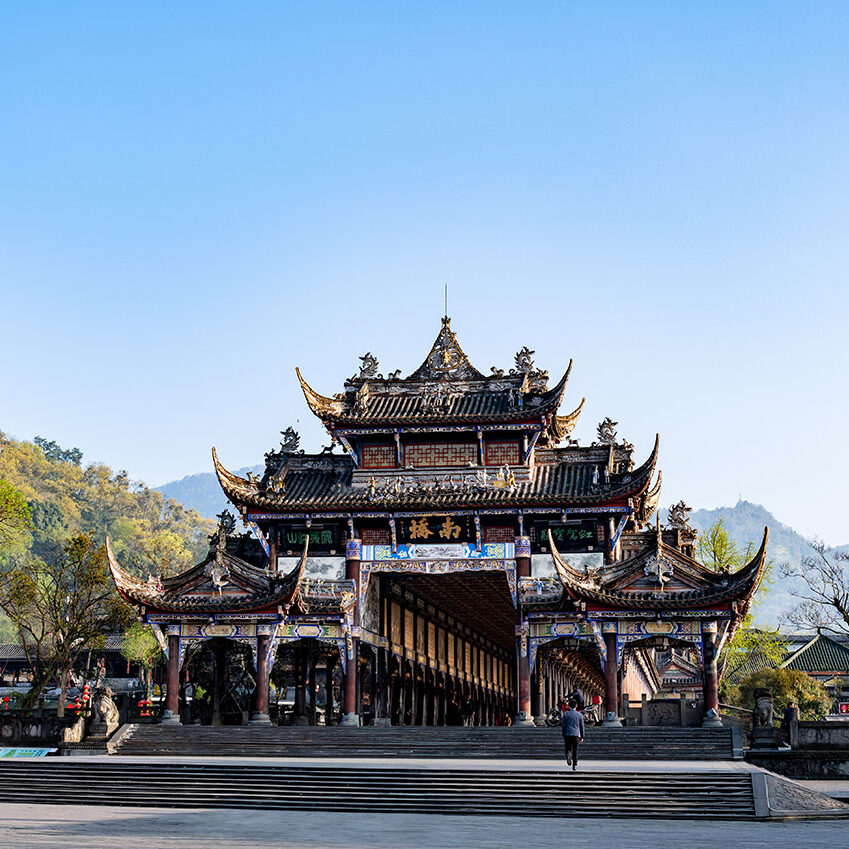
Introduction
Located at the heart of the Sichuan province, Chengdu is a city which captivates visitors with its unique blend of ancient traditions and modern allure. Renowned as the “land of abundance,” Chengdu’s rich cultural heritage, scenic landscapes, and mouthwatering cuisine make it a destination like no other. From the majestic pandas at the Chengdu Research Base of Giant Panda Breeding to the vibrant
ambiance of Jinli Ancient Street, the city offers a host of experiences just waiting to be uncovered. Whether you’re seeking tranquillity amidst the lush gardens of Wuhou Shrine or embarking on a culinary adventure through the bustling food markets, Chengdu delights at every turn. With its warm hospitality, dynamic arts scene, and vibrant street life, Chengdu beckons travellers from around the globe to discover its charms and create unforgettable memories.
Some of Chengdu’s titles:
- UNESCO Creative Cities Network
- UNESCO City of Gastronomy
- UNESCO World Heritage Sites: Dujiangyan Irrigation System and Qingchen Mountain
- Birthplace and the centre of civilization for the upper reaches of the Yangtze River
- China’s Happiest City for 15 consecutive years
Post-conference city exploration
For those interested in extending their stay and exploring Chengdu after the conference, we will be happy to provide a selection of hotels, conveniently located in the city centre, with special reduced rates.
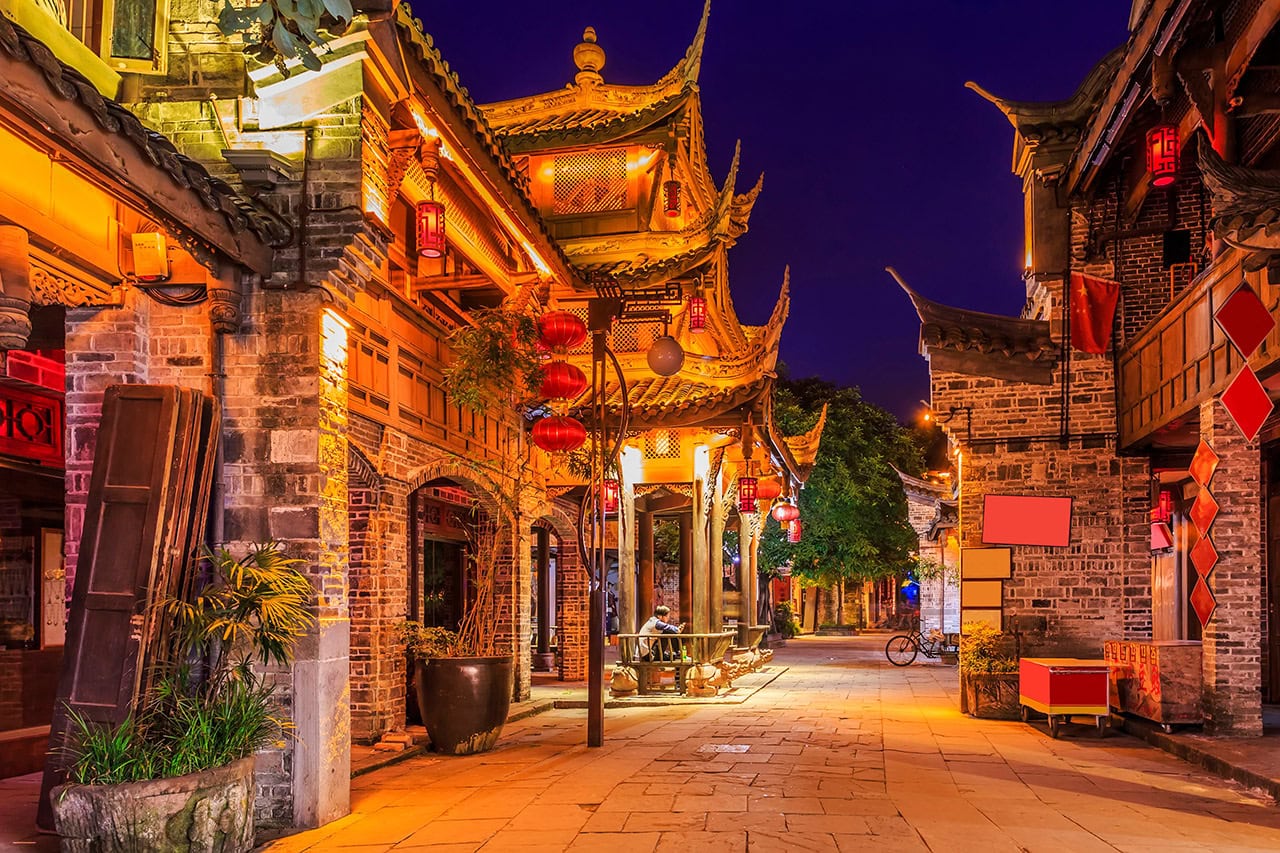
Kuanzhai Alley
Kuanzhai Alley, composed of the Kuan Alley (Wide Alley), Zhai Alley (Narrow Alley) and Jing Alley, are relatively extensive ancient streets in Chengdu dating back to the Qing Dynasty (1644-1911). Kuan Alley boasts the most untouched original buildings in the entire block. Here you can enjoy a cup of tea, eat authentic Sichuan cuisine, and experience the customs of old Chengdu. Zhai Alley has both late Qing Dynasty and early Republic of China buildings, as well as early western-style housing. It is a recreational area with mainly western-style food and leisure. Jing Alley is a typical epitome of traditional Chengdu. In addition to the fascinating brick walls, it is here that you can find Chengdu’s specialty snacks and traditional products.
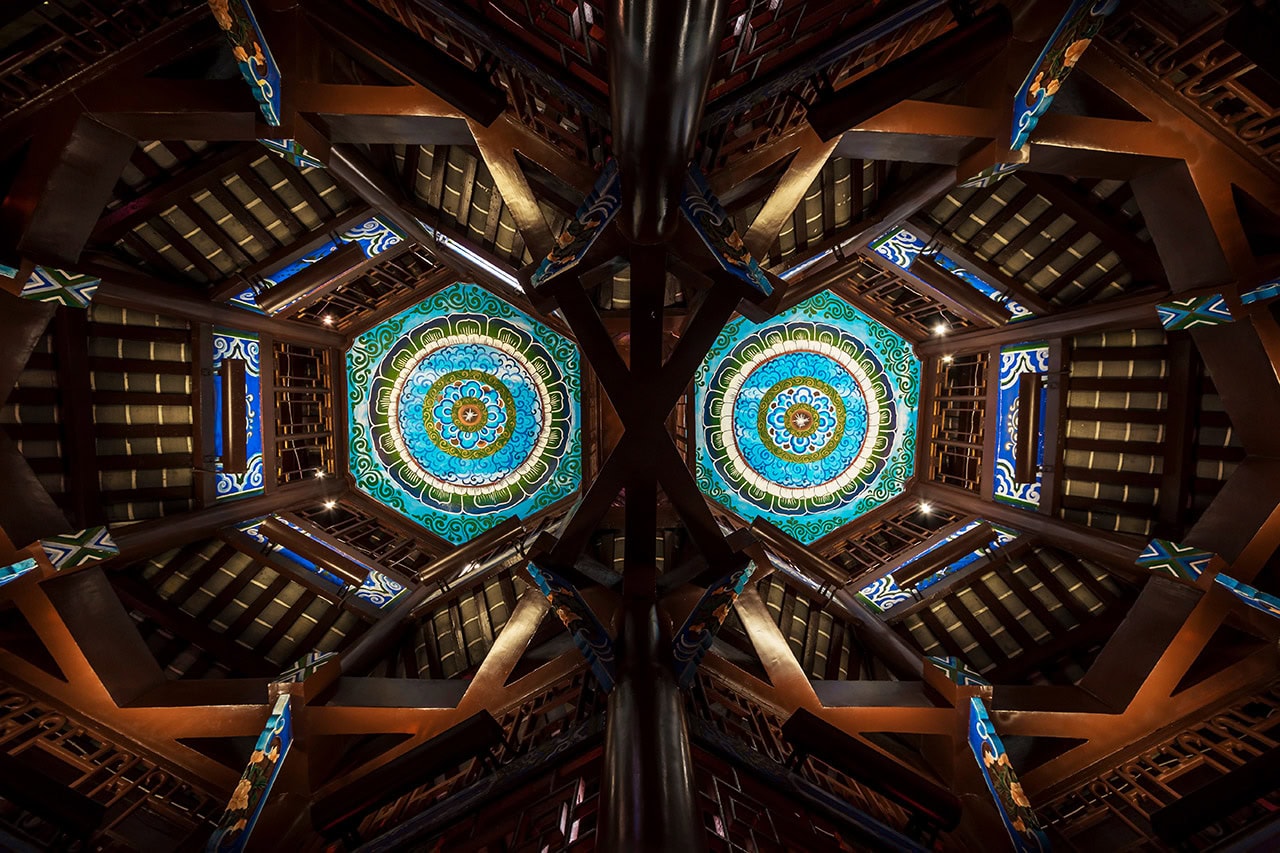
Jinli Cultural Heritage Quarter
Step back in time as you wander through Jinli Ancient Street, a bustling pedestrian throughfare that dates back to the Qin Dynasty (221-206 BC). Lined with traditional-style buildings, red lanterns, and an array of shops selling local handicrafts, snacks, and souvenirs, Jinli offers a glimpse into Chengdu’s ancient past. Visitors can enjoy Sichuan opera performances, sample authentic Sichuan cuisine, and immerse themselves in the lively atmosphere of this well-preserved historic district.
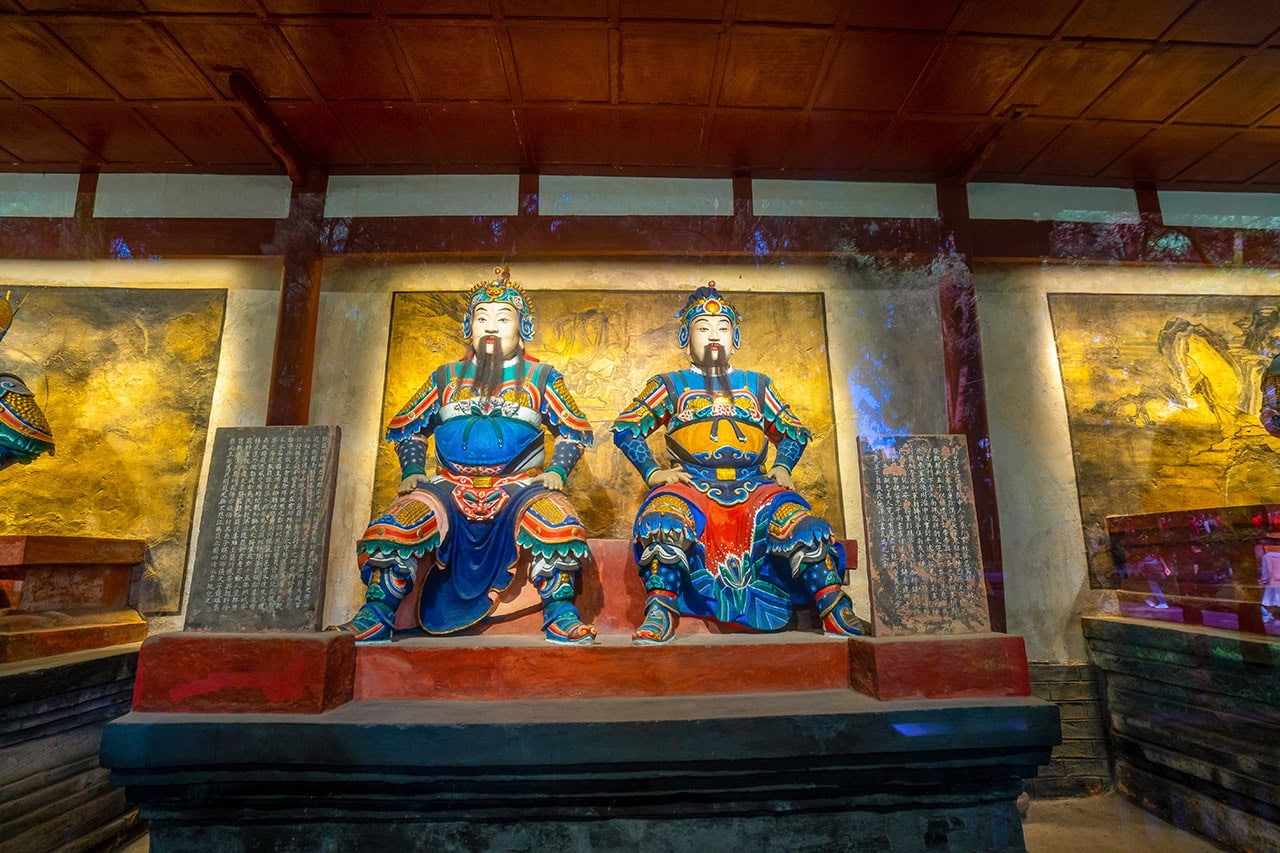
Wuhou Shrine
Pay homage to the legendary Three-Kingdoms-Era military strategist Zhuge Liang at the Wuhou Shrine, a cultural complex dedicated to him as well as Emperor Liu Bei, located in the southern suburbs of Chengdu. The shrine features elegant Ming Dynasty architecture, tranquil gardens, and various historical relics, including statues, stone tablets, and calligraphy. Visitors can explore the serene grounds, learn about the exploits of Zhuge Liang and other historical figures, and experience the spiritual atmosphere of this revered site.
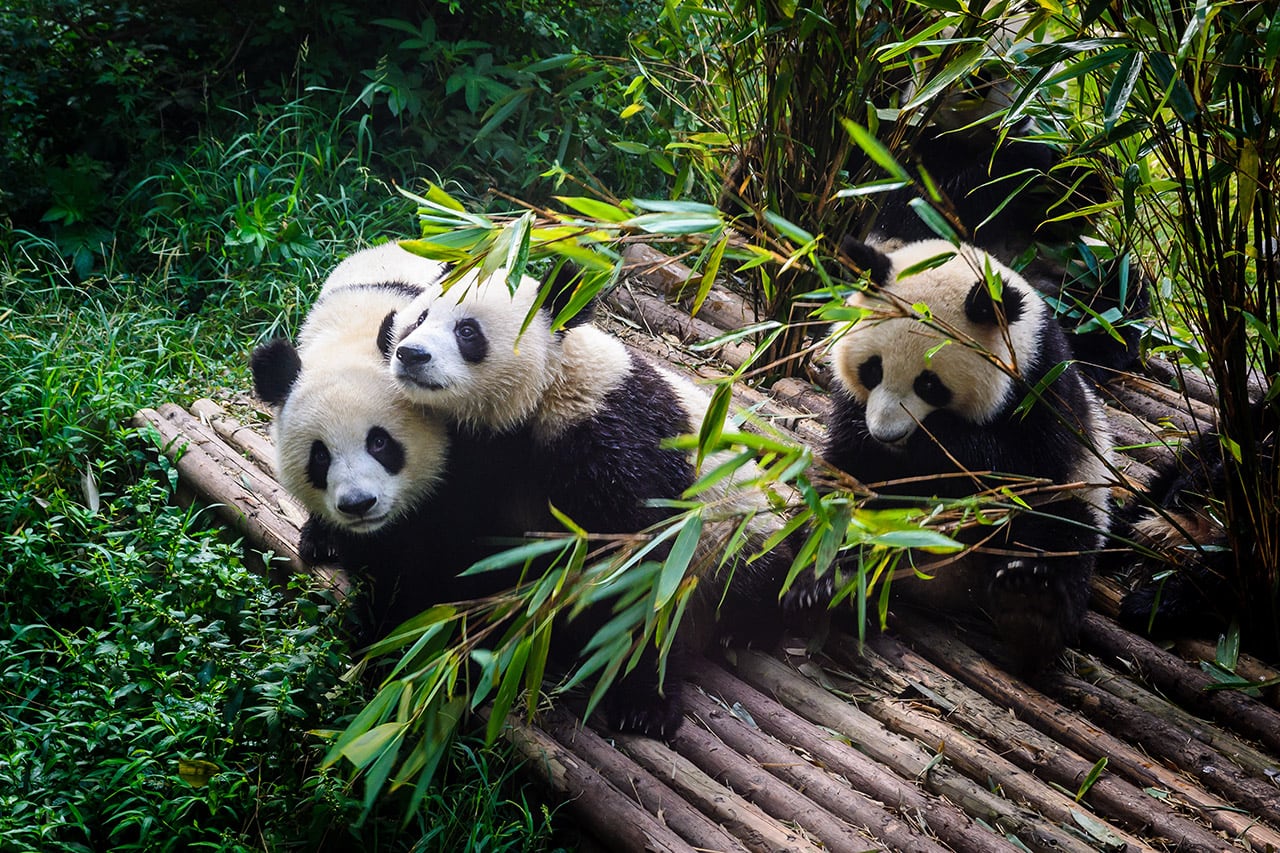
Chengdu Research Base of Giant Panda Breeding
Delight in an up-close encounter with China’s beloved giant pandas at the Chengdu Research Base of Giant Panda Breeding, situated just outside the city centre. Established in 1987, this world-renowned conservation facility is dedicated to the preservation and breeding of giant pandas, as well as public education and research efforts. Visitors can observe pandas in their natural habitat, learn about conservation initiatives, and even participate in volunteer programmes to support the centre’s mission. The base also houses other rare and endangered species, such as red pandas and black-necked cranes, amidst lush bamboo groves and scenic landscapes.
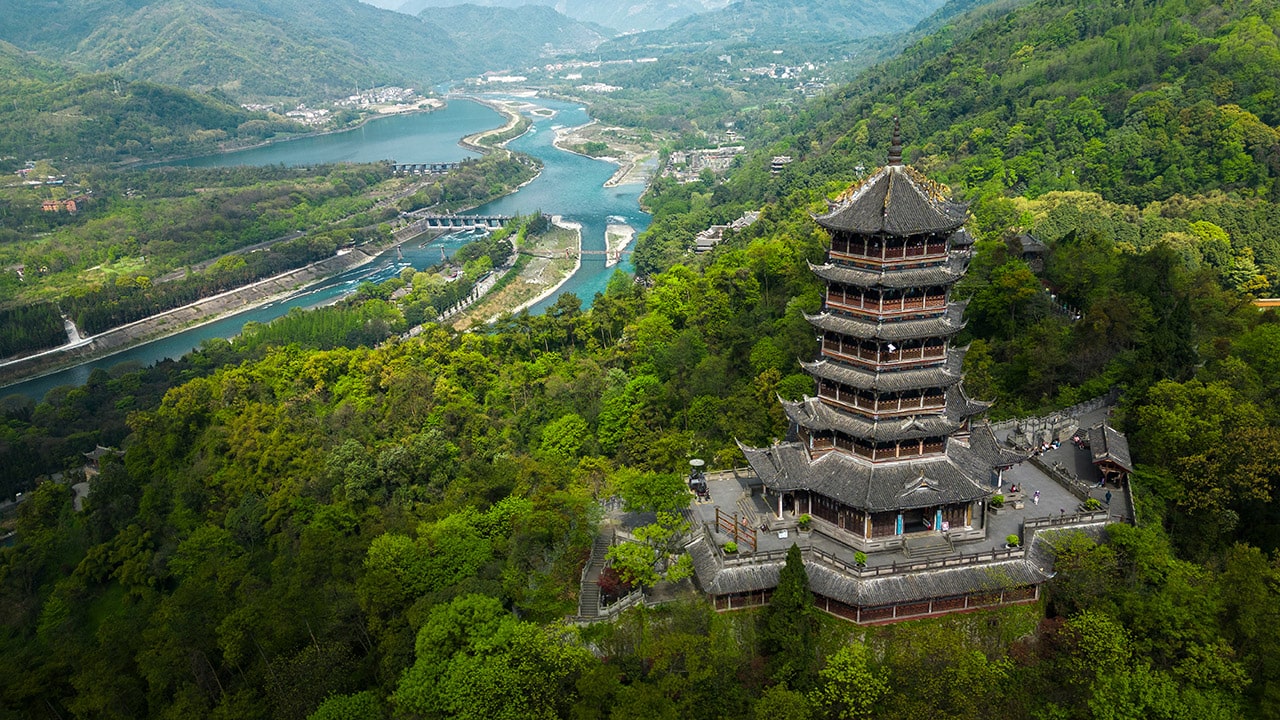
Dujiangyan Irrigation System
One of the world’s oldest and most ingenious water conservation projects, the Dujiangyan Irrigation System is located approximately 60 kilometres northwest of Chengdu. Built over 2000 years ago by the ancient Chinese engineer Li Bing, this UNESCO World Heritage Site transformed the Chengdu Plain into a fertile agricultural region by harnessing the Minjiang’s waters. Visitors can marvel at the system’s sophisticated design, including the iconic Fish Mouth water-diversion levee and intricate network of canals, weirs, and dams, while enjoying scenic views of the surrounding mountains and rivers. The site also offers cultural attractions such as the Dujiangyan Museum and scenic spots like Erwang (Two Kings) Temple and Mount Qingcheng, making it a fascinating destination for history enthusiasts and nature lovers alike.